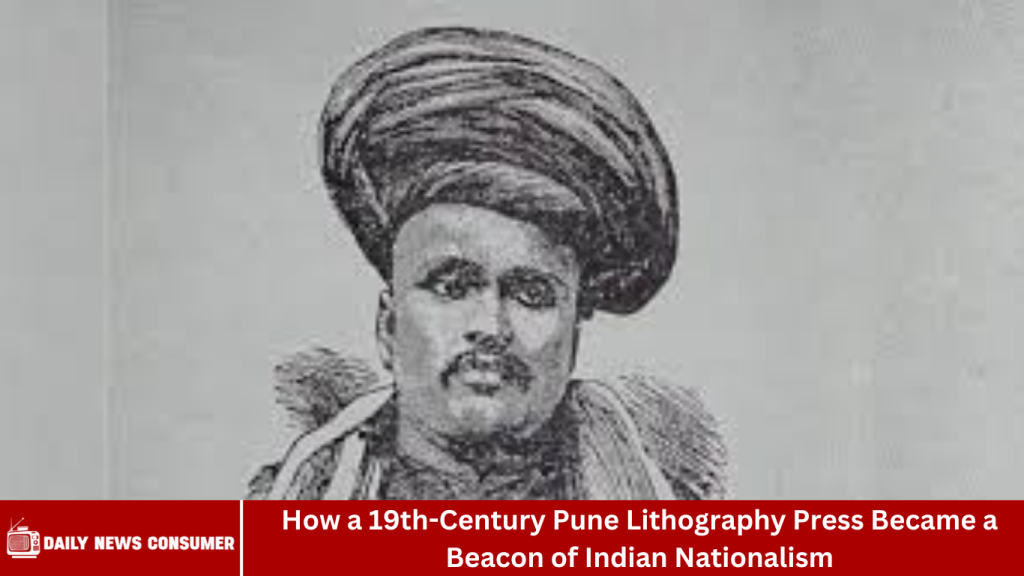Hi everyone! How are you all doing? Welcome to www.dailynewsconsumer.com! In the late 19th century, as British colonial rule tightened its grip over India, a quiet revolution was brewing in Pune—one that would use ink and paper to fuel the flames of nationalism. Established in 1878, a modest lithography press in Pune became an unlikely yet powerful tool in India’s struggle for independence. Far from just a printing house, this press played a crucial role in disseminating nationalist ideas, preserving Indian culture, and countering colonial propaganda.
This article explores the fascinating journey of this lithography press—how it emerged as a hub for anti-colonial resistance, the key figures behind its success, and its lasting legacy in India’s freedom movement.
The Birth of the Lithography Press in Pune
Lithography: A Revolutionary Technology
Lithography, a printing technique invented in the late 18th century, allowed for high-quality reproductions of text and images. Unlike traditional methods, it was faster and more affordable, making it ideal for mass-producing books, pamphlets, and artwork. By the mid-19th century, lithography had reached India, and Pune—a center of education and Marathi intellectualism—was quick to adopt it.
The Founding of the Press (1878)
The exact origins of this particular press remain somewhat obscure, but historical records suggest it was established in 1878 by Indian entrepreneurs who saw the potential of print media in shaping public opinion. Unlike British-run presses, which often censored nationalist content, this press became a platform for Indian voices.
The Press and the Rise of Indian Nationalism
1. Printing Nationalist Literature
The press became instrumental in publishing:
- Political pamphlets criticizing British policies.
- Speeches of nationalist leaders like Bal Gangadhar Tilak and Gopal Krishna Gokhale.
- Underground revolutionary texts that were banned by the British.
2. Promoting Vernacular Languages
While British presses favored English, this Pune-based press championed Marathi, Sanskrit, and Hindi, making nationalist ideas accessible to the masses.
3. Visual Propaganda: Posters and Cartoons
Beyond text, the press produced:
- Patriotic posters featuring Indian heroes.
- Satirical cartoons mocking British officials.
- Religious imagery intertwined with nationalist messages (e.g., linking Goddess Bharat Mata with freedom).
4. Connection with Freedom Fighters
Key figures associated with the press included:
- Bal Gangadhar Tilak – Used its publications to spread his message of Swaraj (self-rule).
- Gopal Krishna Gokhale – Advocated moderate reforms through its printed materials.
- Revolutionary groups – Secretly distributed anti-British literature through the press.
British Crackdown and the Press’s Resilience
Censorship and Raids
By the early 1900s, the British grew wary of the press’s influence. They:
- Imposed strict censorship laws (e.g., the Vernacular Press Act, 1878).
- Conducted raids, seizing “seditious” materials.
- Arrested printers linked to nationalist activities.
Underground Printing Operations
Despite repression, the press adapted by:
- Using coded language to evade censors.
- Operating at night to print banned literature.
- Distributing materials through secret networks.
Legacy of the Pune Lithography Press
Though the press eventually faded into obscurity, its impact endured:
- Inspired other nationalist presses across India.
- Preserved Indian cultural identity against colonial erasure.
- Laid the groundwork for modern Indian print media.
Today, historians recognize it as a silent yet fierce warrior in India’s freedom struggle.
Frequently Asked Question
What made lithography so important in India’s freedom struggle?
Lithography allowed mass production of nationalist literature and imagery at a low cost, making anti-British ideas accessible to the common people.
Who were the key figures associated with this press?
Bal Gangadhar Tilak, Gopal Krishna Gokhale, and several revolutionary leaders used the press to spread their messages.
How did the British try to suppress the press?
Through censorship laws, raids, and arrests, the British attempted to shut down nationalist printing activities.
Did the press only print political material?
No, it also published religious texts, educational books, and cultural works to promote Indian heritage.
How did the press survive British censorship?
By operating secretly, using disguised language, and distributing materials through underground networks.
Are any original prints from this press preserved today?
Yes, some rare prints are held in archives like the Bhandarkar Oriental Research Institute in Pune.
What is the press’s relevance today?
It symbolizes the power of media in resistance movements and remains a case study in India’s fight for free expression.
Conclusion
The story of the 19th-century Pune lithography press is a powerful example of how print media became a catalyst for social and political change in colonial India. More than just a technological innovation, the press served as a vehicle for spreading nationalist ideas, challenging British authority, and nurturing a collective Indian identity. Through the publication of vernacular texts, political commentaries, and reformist literature, the press played a critical role in empowering local voices and cultivating political consciousness among the masses. Ultimately, what began as a modest printing operation evolved into a dynamic instrument of resistance, contributing significantly to the foundation of India’s freedom movement.

